Semra Erden, Founder of Eloquent-U, was born in Istanbul and came to the United States after earning a degree in French Literature and launching a designer boutique in Istanbul. She turned it over to her family after marrying a professor at SFSU and moving to California. With an interest in both wine and design, she began working for several top-tier wine producers designing packaging and branding. She’s faced hardship and success, narrowly escaped the Tubbs Fire, passed the Level 1 Master Sommelier exam, and loves to cook. Here’s her extraordinary story.
You were born in Turkey. Can you tell us about your family and what it was like growing up in your homeland? Do you go back frequently to visit?
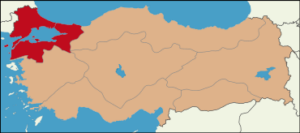 I was born and raised in Istanbul, with parents from the Marmara Region of Turkey (in red). I have one younger sister. Growing up in Turkey was amazing. I experienced diverse cultures and saw how people embraced their traditions. My parents encouraged us to be respectful, kind, and hardworking, and they emphasized the importance of education, ensuring we studied in French schools. Family gatherings, delicious food, and celebrations were a big part of my childhood. We often visited relatives and had big feasts during holidays, teaching me the value of family, community, and cultural heritage. Living in Turkey allowed me to appreciate its beautiful landscapes, from Mediterranean beaches to historical sites. Traveling beyond Turkey, mostly to European countries, also helped us to appreciate their cuisine, culture, and history. Overall, I am proud of my rich and diverse cultural background, which I have passed on to my daughters through frequent visits to family and historical sites.
I was born and raised in Istanbul, with parents from the Marmara Region of Turkey (in red). I have one younger sister. Growing up in Turkey was amazing. I experienced diverse cultures and saw how people embraced their traditions. My parents encouraged us to be respectful, kind, and hardworking, and they emphasized the importance of education, ensuring we studied in French schools. Family gatherings, delicious food, and celebrations were a big part of my childhood. We often visited relatives and had big feasts during holidays, teaching me the value of family, community, and cultural heritage. Living in Turkey allowed me to appreciate its beautiful landscapes, from Mediterranean beaches to historical sites. Traveling beyond Turkey, mostly to European countries, also helped us to appreciate their cuisine, culture, and history. Overall, I am proud of my rich and diverse cultural background, which I have passed on to my daughters through frequent visits to family and historical sites.
Winegrowing is an important part of Turkey’s heritage and long ago the country was a significant producer. But most of the grapes grown there now are table grapes. When did that change? Did wine have a place on the table at your family celebrations?
Wine production in Turkey has a long and storied history, dating back thousands of years. The earliest evidence of winemaking in the region dates to around 6,000 BC in what is now modern-day Turkey. The Hittites, Phrygians, Greeks, and Romans all contributed to the development of winemaking in the region, with the ancient city of Ephesus being a notable center of wine production during the Roman Empire.
However, the modern wine industry in Turkey began to take shape in the 20th century, particularly after the founding of the Turkish Republic in 1923. During this time, efforts were made to modernize and expand the wine industry, with the establishment of various wineries and the introduction of new grape varieties and winemaking techniques.
Today, Turkey has a growing wine industry with a diverse range of grape varieties and wine regions. While the country is better known for its table grapes, there are several notable wine-producing regions, including Thrace, Anatolia, and the Aegean coast, producing wines from small boutique wineries to larger commercial operations. Some of my favorite producers are Chamlija, Urla, Kayra, Suvla, Corvus, Pasaeli, and Barbare wineries.
In terms of grape varieties, Turkey is home to a wide array of indigenous and international grape varieties, each contributing to the diversity of Turkish wines. Some of the most common indigenous grape varieties include:
- Öküzgözü: A red grape variety primarily grown in eastern Anatolia, known for producing medium-bodied wines with flavors of red fruits and spices. (My favorite grape)
- Boğazkere: Another red grape variety native to eastern Anatolia, prized for its deep color and tannic structure, often used in blends to add structure and complexity.
- Kalecik Karası: A red grape variety indigenous to the Ankara region, known for producing elegant, fruity wines with soft tannins and vibrant acidity
- Narince: A white grape variety grown primarily in the Tokat region, producing aromatic wines with notes of citrus, stone fruits, and herbs.
- Emir: A white grape variety native to central Anatolia, known for producing crisp, refreshing wines with flavors of green apple, pear, and melon.
In addition to these indigenous varieties, Turkey also cultivates international grape varieties such as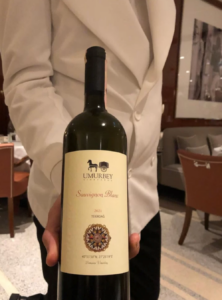 Cabernet Sauvignon, Merlot, Syrah, Chardonnay, and Sauvignon Blanc, which are used both in varietal wines and blends to create a diverse range of styles and flavors.
Cabernet Sauvignon, Merlot, Syrah, Chardonnay, and Sauvignon Blanc, which are used both in varietal wines and blends to create a diverse range of styles and flavors.
Wine and our national drink, RAKI, always featured prominently at our celebrations, whether they were gatherings, holiday dinners, or milestone celebrations. RAKI, always takes the spotlight, complementing the appetizers, meal, and our cultural convivial atmosphere. Alongside these, we also serve Ayran, a yogurt-based drink, for non-drinkers. Despite the beverages, our focus is always on coming together to savor good food, company, and conversation.
Early in your career you opened a boutique called Alhan Boutique in Istanbul. Is the store still operating? Did you design your own products to sell or were you sourcing products from established designers?
Ahhhh… good memories!
When my mom decided to retire from her business, I seized the opportunity to transform it into a gift shop. With my father’s support, I executed my business plan and launched my dream boutique, featuring my own creations and curated antique pieces. Inspired by ancient civilizations’ artifacts, I designed each item and had them handcrafted by copper artists. These exclusive pieces were sold solely at Alhan boutique for one year before being distributed to other stores in limited quantities. Despite initial doubts from others, the unique merchandise led to a successful first year, yielding both profit and reputation. As my engagement approached at the end of the second year, I transitioned the business back to my family upon my marriage, relocating to California with my husband. Eventually, Alhan boutique ceased operations following my sister’s marriage.
When did you move to the United States; what brought you here?
I relocated to San Francisco in November 1983 after marrying Professor Dr. Ihsan Erden at SFSU.
You’ve worked in the graphic design field for many years, helping to brand an A-list of wine industry clients including Jordan Vineyards & Winery, Keller Estate, Gary Farrell, Hamel Family Wines, Master the World Inc, Beam Wine Estates and Allied Domecq. Can you tell us about your favorite clients or the projects that you are most proud of?
This question reminds me “Which of your kids is your favorite and you are most proud of?”
While it’s true that all clients and projects hold a special place in my professional journey, there are certainly some standout experiences worth highlighting. Each client and project have brought unique challenges and opportunities for creativity, growth, and collaboration.
For example, working with Jordan Vineyard & Winery provided an exciting opportunity to delve into the world of luxury, elegance and sophistication of their lifestyle brand.
Similarly, collaborating with Master the World Inc allowed me to explore innovative design concepts and push the boundaries of traditional graphic design, resulting in visually striking and memorable packaging materials.
Moreover, partnering with Gary Farrell Winery presented a chance to blend my passion for design with a deep appreciation for the art and science of winemaking, creating designs that captured the essence of their wines.
Each client and projects have its own story and significance, and I take pride in the relationships built and the impact achieved through my work with these esteemed clients in the wine industry.
Your LinkedIn profile has several references alluding to the fact that you are a good listener and want to get to know your clients very well before you begin working with them. How do you get started with a new client? How do you choose who to work with?
When starting with a new client, I prioritize understanding their business goals and needs through an initial consultation and meetings. I actively listen and ask probing questions to gain insights into their industry, audience, and challenges. Building rapport and trust is crucial, achieved by being transparent and attentive. I ensure clear communication of expectations regarding timelines, deliverables, and budget.
In choosing whom to work with, I seek alignment in values, goals, and enthusiasm for the project. Clients who are collaborative, passionate, and committed to results are preferred. I also consider factors like project scope, my expertise, and availability. Ultimately, establishing mutual respect and rapport is fundamental for a successful partnership.

A few years ago, you moved to Petaluma and Windsor after losing your home in the Tubb fires in Sonoma County. It was a harrowing tale; you were rescued in the middle of the night by a local official and one of your neighbors. Can you tell us what happened? Has your philosophy of life changed significantly as a result?
Yes, it was a harrowing experience. My daughter woke me with a phone call; the backyard was burning, the garage door wouldn’t open, and the street was a river of sparks and hot wind. I was running and yelling for help in my pajamas and slippers. A car, trying to leave the street, stopped and turned back—my neighbor and his sons. A sheriff’s car drove in, and they opened the garage door. We didn’t even close the front and garage doors as we tried to escape through a tunnel of flames and sparks. I couldn’t believe we’d survive as we waited to turn onto the freeway in front of a gas station surrounded by burning trees. I still don’t remember how I made it to Petaluma around 5:30 am, nearly four and a half hours later. I was in shock, disbelief, and grief.
In the following days, the destruction of the Tubbs Fire and my near-death experience sank in. The community’s support was an unforgettable reminder of humanity that helped me rebuild my life. In 2020, with COVID-19, my daughter and I left for Turkey. I worked remotely, returning to Sonoma twice a year for clients and business matters. During a visit in April 2023, I realized how much I missed home and decided to return. I went back to Istanbul, packed up over a couple of months, and moved back in August 2023—first to Petaluma, then to Windsor early this year.
Has my philosophy of life changed significantly? Absolutely. It’s a cliché to say life is too short, but it’s true. I’ve learned to love myself, indulge myself, and I’ve healed by accepting what happened.
Full Circle Wine Solutions and Master the World (Limeng Stroh and Evan Goldstein’s firms) are both your clients. They are well-known in the wine education industry. How did you get connected with them? We also noticed that you received a Double Gold/First Place award in the Wine Kit Category of the SF Chronicle Wine Competition. Can you tell us about that project and what made it stand out?
I connected with Evan Goldstein and Limeng Stroh through our previous work at Allied Domecq and Beam Wine Estates. A few years after branding Master the World’s marketing materials and packaging, I received a new brief to create a more approachable and memorable packaging concept for the tasting experience. I designed an encyclopedia-style package that could hold six 185ml tasting bottles and ship without breakage. The final product passed all tests and effectively communicated the intended message, satisfying both the client and end users. Limeng and Evan must have been impressed enough with the design to enter it into the competition. I learned about the Double Gold/First Place award when Limeng Stroh emailed me the good news.
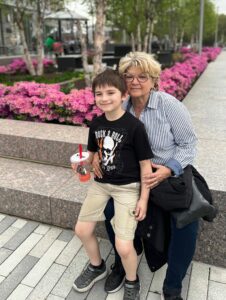 Do you have any family here in California?
Do you have any family here in California?
I don’t have any family in California now, but I have friends I’ve adopted as family. My oldest daughter, Deniz, my son-in-law, Josh, and my lovely grandson, Ender, are in Buffalo, NY. My youngest daughter, Aylin, is graduating from Sciences Po in Paris at the end of June and may either return to California or end up in Washington, D.C.
You’re also a Master Sommelier (Level 1) and love to cook and entertain. If we were coming to your house for dinner, what would you cook and what wine would you serve? (We hope it would be from the Petaluma Gap!)
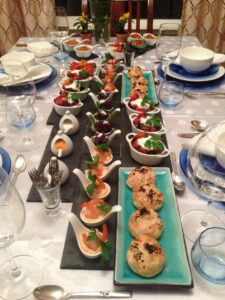
Thanks to my mom, my sister and I learned to cook, and it became our hobby. Cooking is my passion and a way to communicate. I’d advise you not to have breakfast or lunch before coming to my house for dinner because you’d enjoy at least five to six appetizers, three to four warm and cold starters, a main course with two sides, and a couple of desserts. I don’t pair wines with my food when entertaining; I leave it to my guests to choose their favorite from a well-stocked bar with a good selection of wines, beer, and other beverages. To me, food and wine, or any beverage, are meant to complement good company and a great gathering
